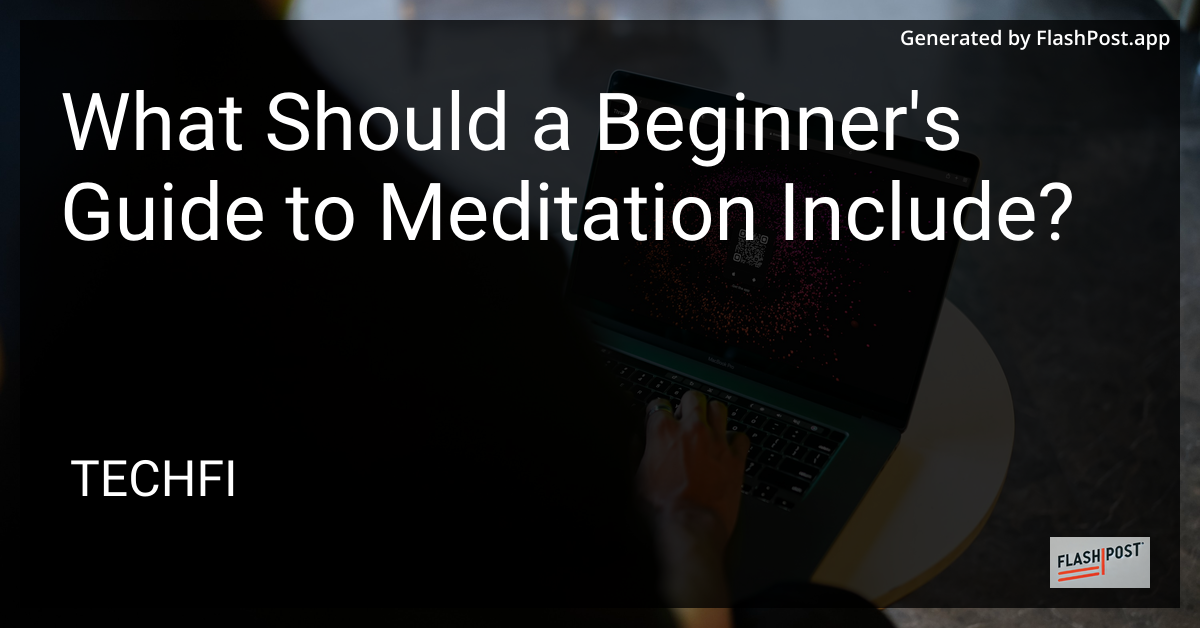What Should a Beginner's Guide to Meditation Include?

Meditation is a powerful practice that has been used for centuries to enhance mental clarity, reduce stress, and promote overall well-being. If you're just starting, crafting a thorough beginner's guide is essential to help you embark on this transformative journey. Here's what such a guide should include:
Understanding Meditation
Before diving into techniques, a beginner's guide should explain what meditation is. Clarify that meditation is the practice of focusing the mind to achieve a mentally clear and emotionally calm state. It should highlight its benefits, such as reducing anxiety, improving concentration, and enhancing personal awareness.
Different Types of Meditation
Introduce the various types of meditation, so beginners can explore different options and see what resonates with them:
- Mindfulness Meditation: Emphasizes staying present and observing thoughts without judgment.
- Guided Meditation: Uses visualizations and narratives, often led by an instructor or audio recording.
- Transcendental Meditation: Involves chanting a specific mantra to settle into a deep state of relaxation.
- Loving-kindness Meditation: Focuses on cultivating an attitude of love and compassion towards oneself and others.
Setting Up a Meditation Space
Guide beginners in creating a peaceful meditation environment. A dedicated space, free from distractions, can make a big difference. Suggest adding comfortable seating, calming elements like candles or incense, and ensuring a quiet atmosphere.
Basic Meditation Techniques
Teach the foundational techniques that every beginner should know, including:
- Breath Awareness: Focus on the rhythm of the breath as a calming anchor.
- Body Scan: Sequentially focus attention on different parts of the body to release tension.
- Counting: Gently counting breaths to maintain focus.
Creating a Routine
Encourage establishing a regular meditation routine. Recommend starting with just 5-10 minutes a day and gradually increasing as comfort and interest grow. Choosing a consistent time, like morning or evening, helps integrate meditation into daily life.
Overcoming Challenges
Address common beginner challenges such as restlessness, discomfort, or racing thoughts. Emphasize that these are normal and part of the learning process. Offer tips on how to manage these distractions without frustration.
Resources and Further Reading
Direct beginners to additional resources for deepening their practice. Online courses, mobile apps, and books can provide guidance and inspiration. For more explorations, consider these other beginner’s guides:
- Beginner's Guide
- Beginner's Guide to Machine Learning
- Beginner's Guide to Investing in Stocks
- Beginner's Guide
- Beginner's Guide to Rowing Machines
Final Thoughts
A beginner's guide to meditation should offer a comprehensive yet accessible introduction to this life-enhancing practice. By covering the fundamentals and addressing common concerns, you'll provide the guidance necessary for beginners to cultivate a fulfilling meditation practice. ```